WORLD TRAVEL NEWS ARTICLE
SARDINIA
'Alghero'
On Sardinia’s north west coast, Alghero lies between the sea and a green landscape of olive trees and vineyards. With its atmospheric Old Town, soft-sanded beaches and terrific food, Sue Dobson thinks it’s ideal for a short break or a relaxing holiday
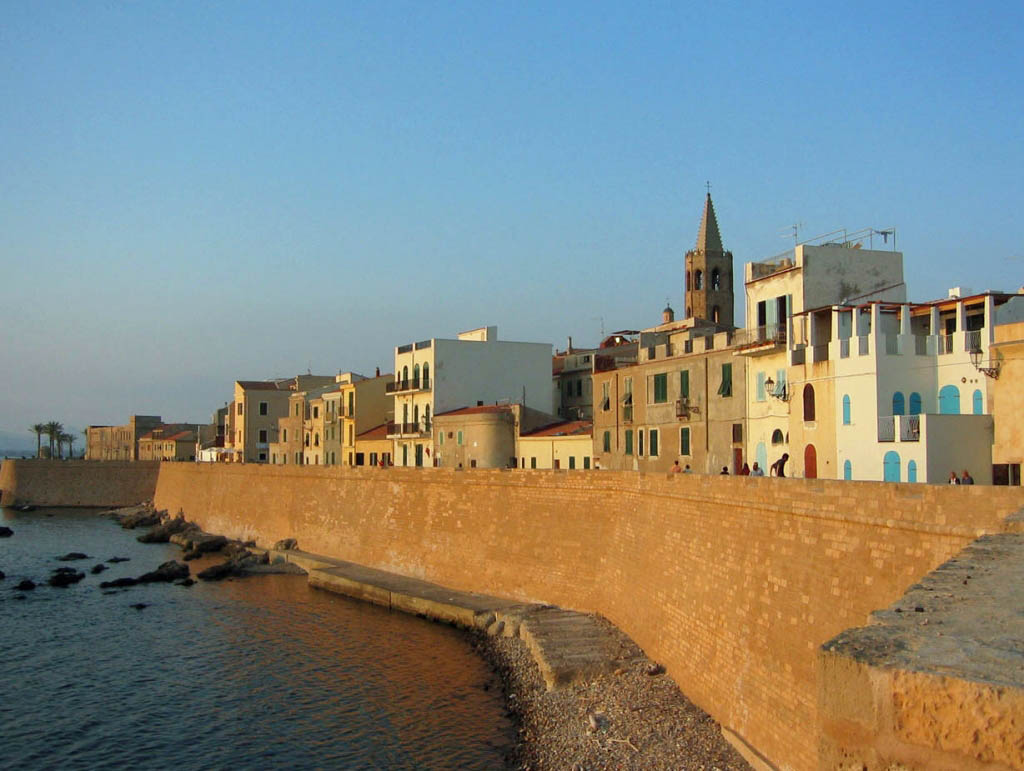
The sea wall in Alghero
A sapphire sea washes against the wide walls and ancient fortifying towers that encase a medieval citadel of buttery sandstone. Alghero’s centrostorico, its atmospheric old town, is the most picturesque in all of Sardinia. A walk along its promenade ramparts reveals vistas of green headlands, sweeping bays and long sandy beaches. It’s an idyllic setting.
The citadel’s narrow streets are packed with boutiques, bars and restaurants. Café tables, shaded by stylish cream umbrellas, spill out onto pretty cobbled piazzas. They line the great ramparts, too, affording grand views and cooling sea breezes.
Slim campanile bell towers rise above a red-roofed town of tall, tightly packed houses where washing is strung beneath shuttered windows and tiny roof gardens bloom in the sunshine. Peeling stucco reveals the ancient stone of buildings inhabited for 800 years.
Spanish-style palazzos and street signs in Italian and Catalan reflect the city’s heritage – 400 years of Aragon and Spanish rule. The Catalan language has been spoken here since the 13th century, and Alghero – Alguer in Catalan – is still sometimes referred to as Barceloneta, little Barcelona.
Although the historic centre feels very much like an old Italian town, many of the buildings have a feisty Spanish flourish. The 16th century cathedral is mainly Catalan-Gothic and Renaissance in style, although you wouldn’t guess that from its Doric-columned frontage. Inside are peach-coloured walls and impressive baroque marble balustrades before the statue-filled high altar. Next door, the former Rosario church is the ideal setting for the Diocesan Museum’s array of priceless religious art.
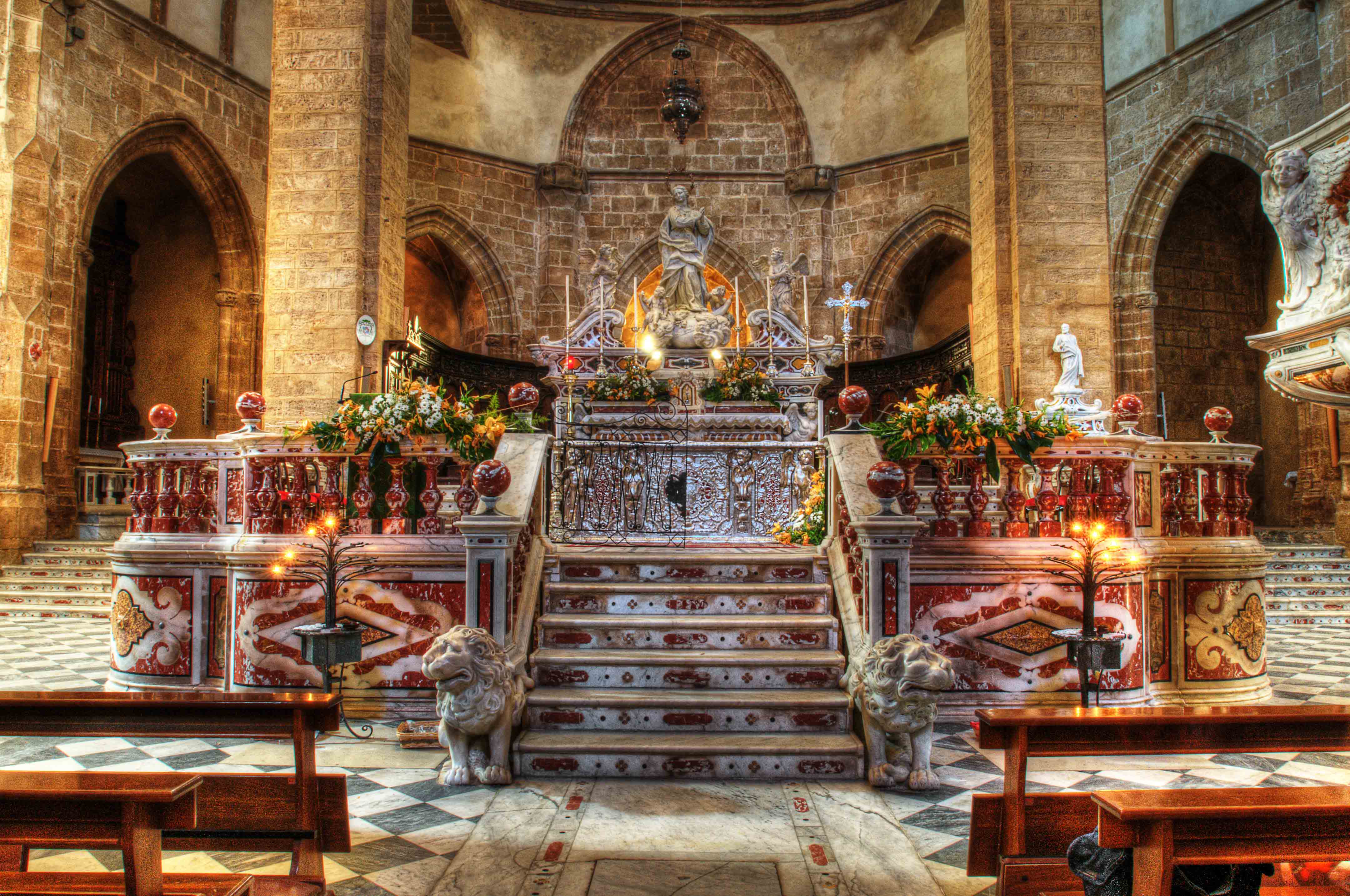
The interior of the cathedral
The real highlight of Catalan architecture is the late-medieval Palazzo d’Albis that oversees the long and busy Piazza Civica. Beneath its arched windows, smart cafés set out their tables, queues form for the best icecream in town, and on the last Saturday of the month, bargain hunters and collectors gather for the art, crafts and antiques market.
In the midst of one of the busiest shopping areas, the restored 14thcentury Chiesa di San Francesco is an enchanting church that mixes Romanesque, Catalan-Gothic and late Renaissance influences, and has a tranquil cloister where concerts are performed in the summer months.
Stylish shopping
The citadel’s narrow streets are made for window-shopping – and buying. Via Carlo Alberto, shoulder-to-shoulder crowded, is the main shopping street and good for clothes and gifts. Elegant boutiques line up on Via Gilbert Ferret; Via Roma is lined with stylish fashion and jewellery shops. Via Simon is a good street for foodies
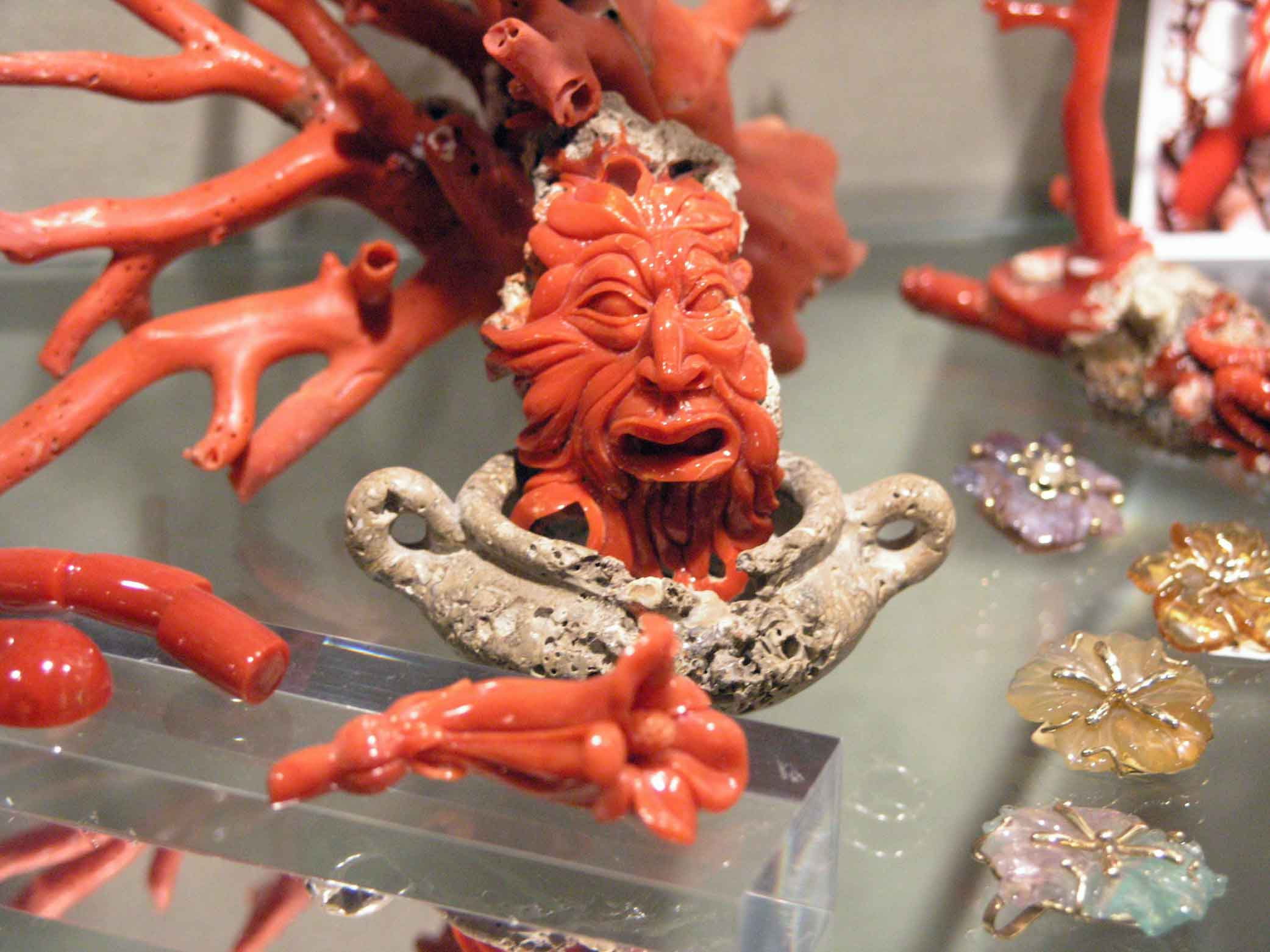
Jewellery fashioned from the red coral.
Alghero is famous for the glowing, deep red coral found off the nearby Riviera del Corallo coast. Fishing for the coral is strictly regulated – and jewellery created from the real thing doesn’t come cheap. Feast your eyes on the finest at Marogna, tucked discreetly into the Palazzo d’Albis, and seek out the jewellery designers working in small ateliers amid the maze of little streets to see some imaginative modern designs incorporating the ‘blood-red gold’.
In the heat of summer, the town shuts down to snooze through the afternoon siesta. By evening it is invigorated and full of life. Many shops stay open until midnight.
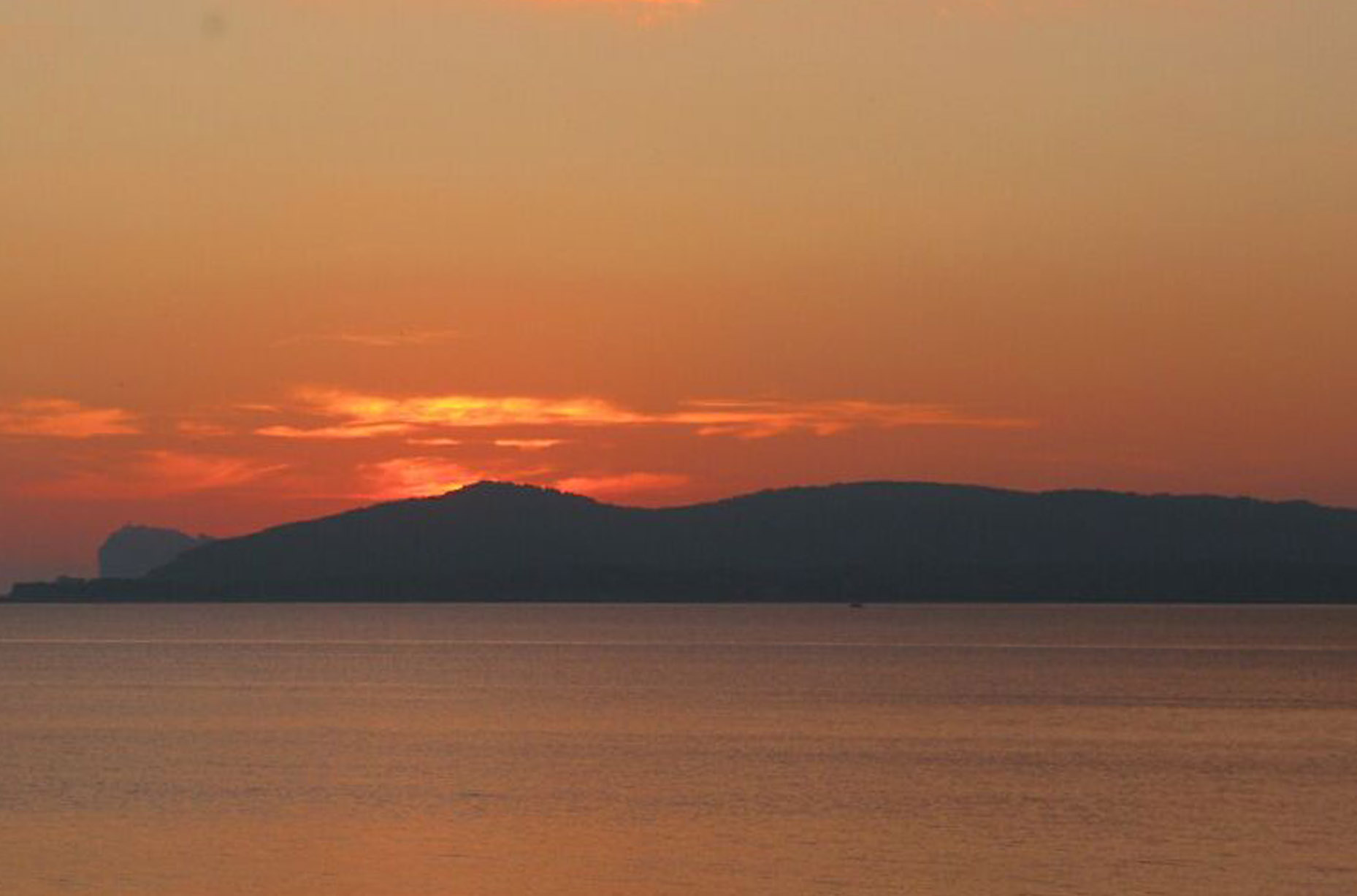
An Alghero sunset
The real magic of Alghero comes with the sunset. To stroll along the walls, or sit at a bar and see the old city’s buildings glow a peachy-apricot colour as the sun sinks in a fiery ball across the bay, is a special experience. Get an outdoor table at one of the rampart restaurants, to dine by flickering candlelight, and the romance is complete.
A feast of fish
The food is another good reason to visit Alghero. Famed for its rock lobsters, Alghero is a treat for lovers of fresh fish and seafood – though meat eaters fare well, too – and its cultural mix makes for some excellent and more unusual dishes. Lobster allaCatalana, cooked with locally grown tomatoes, onions and olive oil, is delicious; the paella is authentic and cremacatalanya (a relation of crème caramel) appears on every menu. But Sardinia is Italian, and the pasta is terrific.
Salami and pecorino (sheep’s milk cheese) are produced locally. One old town restaurant even won the accolade of having the finest selection of cheeses in Italy. Local honey appears on desserts – try gattò, made from almonds, honey and orange peel, also the cream cheese, lemon and honey fritters called seadas. The local red and white wines are the perfect accompaniment to all the good food. Well-respected wines, and Anghelu Rùja port, are produced close to the town, and the prestige winery Sella e Mosca, set in beautiful gardens, offers tours of its museum and wine cellar. Naturally, it also has a well-stocked shop.

The fishing port
Alghero is still a working fishing port, but the boats that line up in the busy marina at the foot of the city walls are mainly of the sailing variety. This is a good coast for water sports and diving, and there are plenty of skippered yachts for hire.
Every day between April and October, numerous tour boats leave the quay for trips to Neptune’s Grotto. They sail along the dramatic coastline to the sheer cliffs and towering limestone headlands of the Capo Caccia promontory. At the caves, a 45-minute tour follows the long snaking passage deep into the rock to view dramatically lit, fantastical stalagmite and stalactite formations. Neptune’s Grotto is one of the must-do sights.
A string of ancient towers fortify the citadel’s bastion walls on its three seaward sides. The modern town stretches back from the grassy green Giardini Pubblici, and out along the coast to the north and the south.
Sand, sea and vineyards
On Sardinia’s north-west coast, Alghero lies between the sea and a green landscape of olive trees and vines. With long beaches of soft sand stretching along the curving coastline, sheltered by quiet pine forests and fringed with bars and hotels, it offers a laid-back holiday mix of sun, sea, sand and small city of unhurried charm.
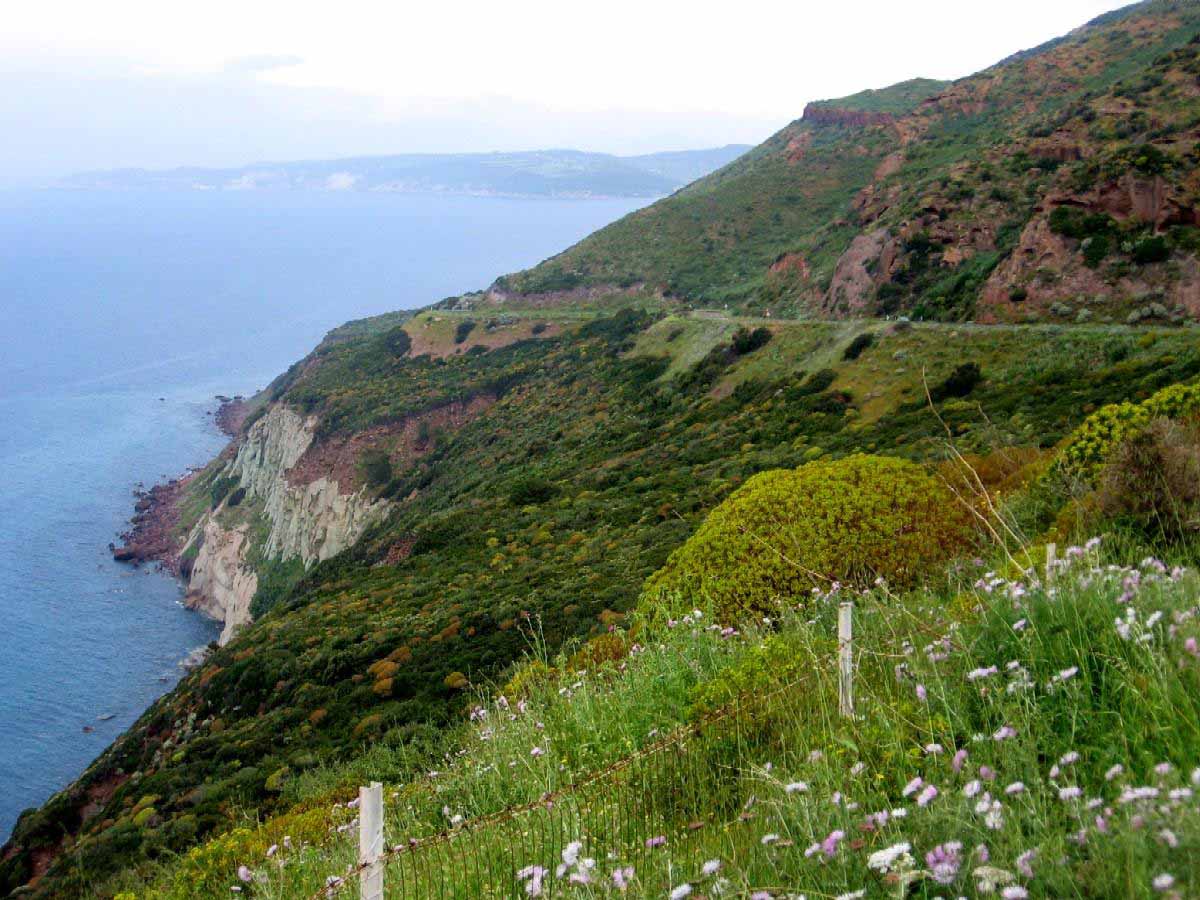
The road between Alghero and Bosa
Out of town, the road from Alghero to medieval Bosa is one of the best corniche drives in Europe. There are vineyards to visit, strange Neolithic remains to discover, a saltwater pool rich in fish and flamingos, and the views from the sheer cliffs of Capo Caccia nature reserve are spectacular.
For more information please visit www.algherosardinia.net
You may also like to read

ITALY - A COUNTRY OVERVIEW
Tour-smart show us why Italy is one of those countries that everybody seems to have an opinion about.
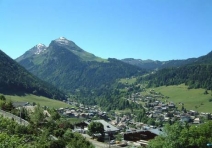
FRANCE - POSITIVE ATTITUDE
Robert Ashton and family took themselves off to the Savoie Mont Blanc region of France and write his report for Tour-smart readers.
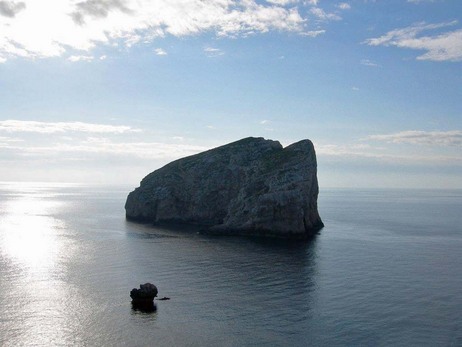
Comments